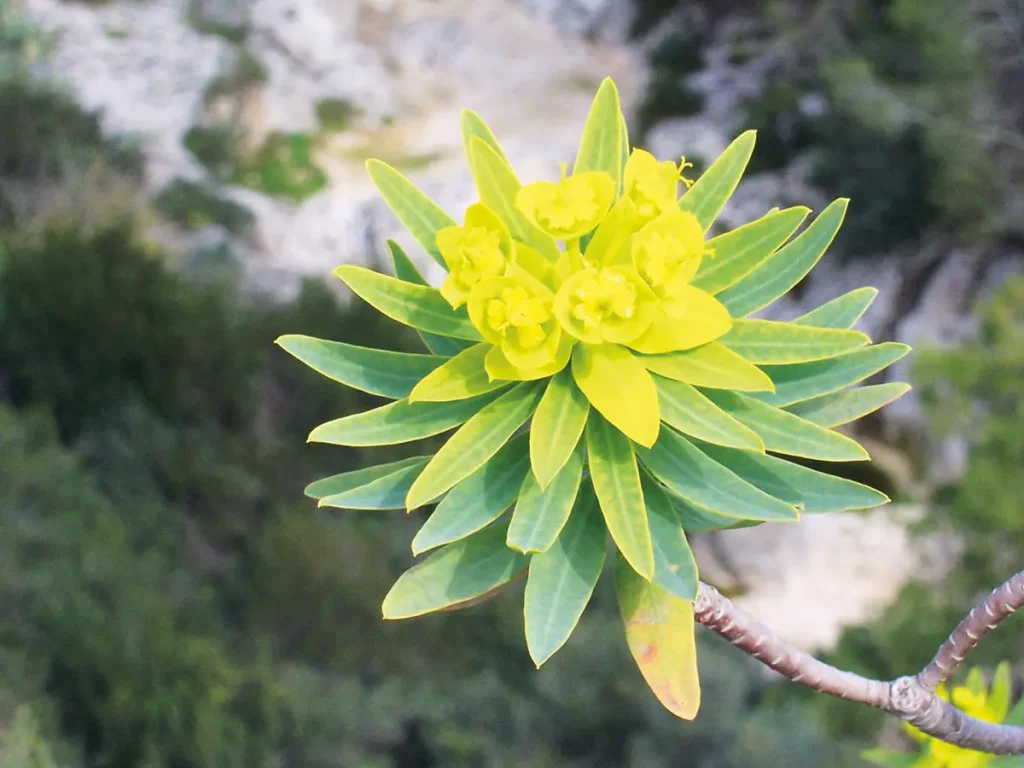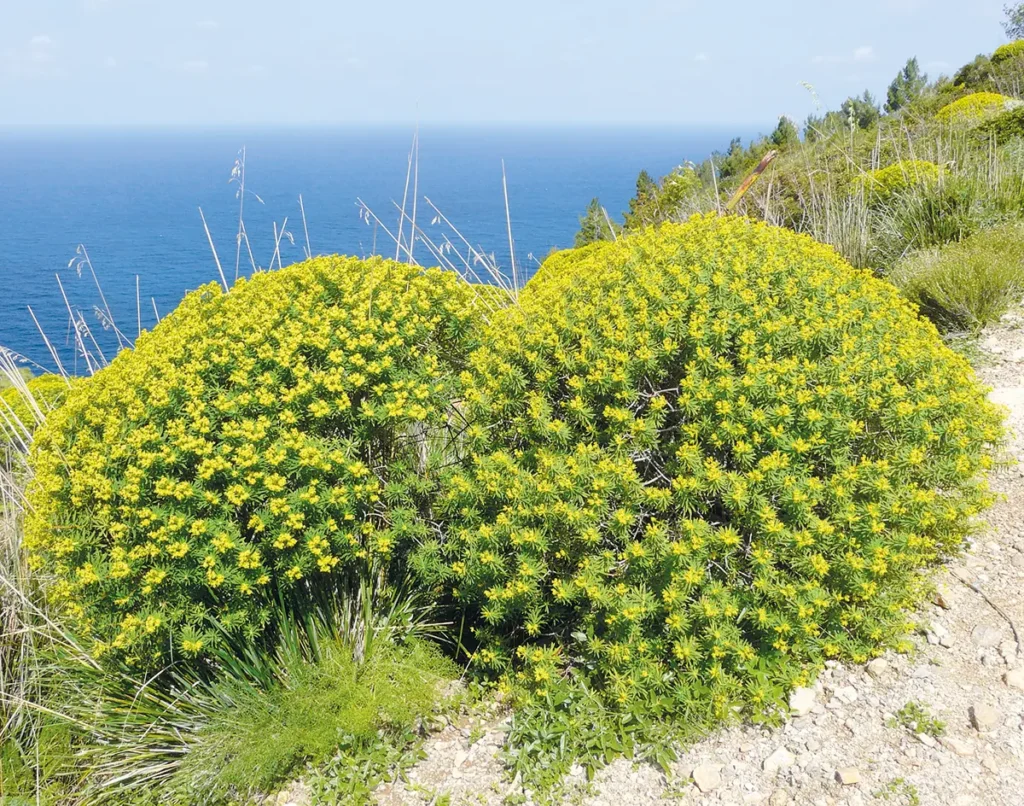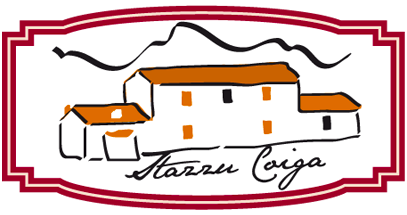


Nome Italiano: Euforbia
Nome scientifico: Euphorbia dendroides L.
Nome Gallurese: Lua / Pateddu
Descrizione:
Arbusto a foglie caduche, molto ramificato, a forma cespugliosa sferica o tondeggiante, con fusto e rami che biforcano in due apici. Fusti rossastri, uniti alla base a formare un tronco basso. Le infiorescenze sono ad ombrella, con ghiandole giallastre. La fioritura avviene tra novembre e aprile e in estate entra in uno stato spoglio di riposo (estivazione) tipico adattamento al clima che consente alla pianta di sopravvivere per lunghi periodi di grande caldo, riducendo al minimo il fabbisogno di acqua.
Proprietà e usi:
La specie è oggetto di ricerca per l’attività antiossidante del tocoferolo in essa presente. Uno studio dell’Università di Napoli “Federico Secondo”, ha dimostrato che Euphorbia dendroides contiene componenti che sono agenti coadiuvanti nella terapia antitumorale.
Curiosità e miti:
L’Euforbia deriva il nome dal medico Euphorbos, poiché fu il primo ad utilizzare la pianta in campo medico. La pianta, che in gallurese viene chiamata anche “la Lua”, un tempo veniva utilizza per la pesca di frodo nei fiumi.
I rametti della pianta e le radici venivano triturate in acqua tiepida e pestate in modo da far fuoriuscire il lattice. Dalla poltiglia così ottenuta, veniva versata negli specchi d’acqua per stordire i pesci a causa della tossicità del lattice, favorendone la cattura.

Italian name: Euforbia
Scientific name: Euphorbia dendroides L.
Gallurese name: Lua / Pateddu
Description:
Deciduous, much-branched, bushy spherical or rounded shrub with stem and branches bifurcating into two apexes. Reddish stems, joined at the base to form a low trunk. Inflorescences are umbrella-like, with yellowish glands. Flowering takes place between November and April and in summer it enters a bare resting state (aestivation) typical adaptation to the climate that enables the plant to survive long periods of great heat, reducing water requirements to a minimum.
Properties and uses:
The species is being researched for the antioxidant activity of the tocopherol present in it. A study by the University of Naples ‘Federico Secondo’ showed that Euphorbia dendroides contains components that are adjuvant agents in cancer therapy.
Curiosities and myths:
Euphorbia derives its name from the physician Euphorbos, as he was the first to use the plant in the medical field. The plant, which is also called ‘la Lua’ in Gallura, was once used for poaching in rivers.
The plant’s twigs and roots were crushed in warm water and pounded so that the latex came out. The resulting mush was poured into ponds to stun fish because of the toxicity of the latex, favouring their capture.
